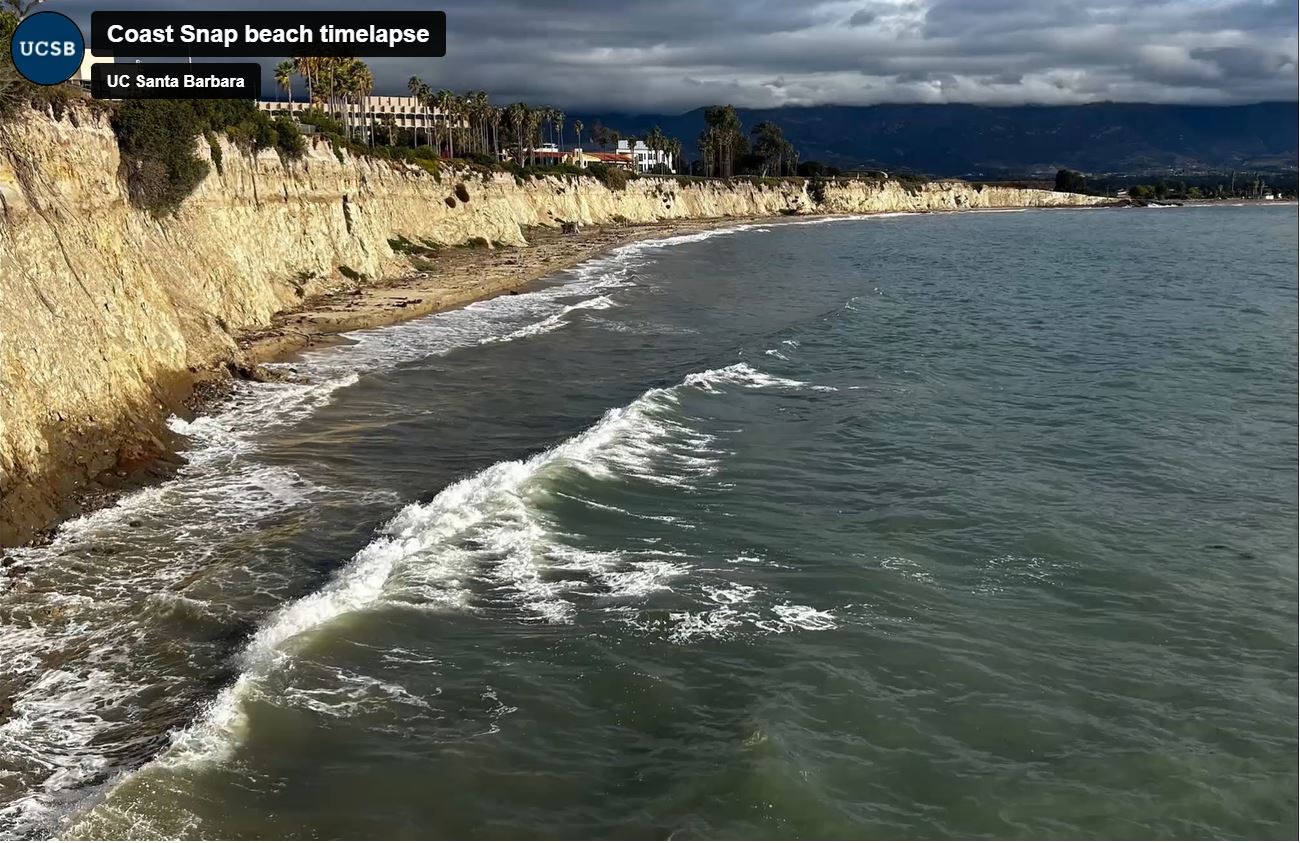By Sonia Fernandez
It’s a simple device but it can do so much: A photo cradle, installed on the steps leading to and from East Campus Beach. The monitoring device invites citizen scientists to document the beach’s many faces. It’s the first installation in Santa Barbara County of the CoastSnap project, a global effort to keep watch on the coasts as they change over time. Developed by researchers in Australia primarily to assess beach width, the project has found its way across the globe and will benefit the local community in several ways.
“It’s primarily to increase engagement with the community as they visit the beach,” said UC Santa Barbara Marine Science Institute researcher Kyle Emery, who has been overseeing the installation of the cradle and the accompanying signage. Thanks to a research grant from the California Ocean Protection Council, his intention is to establish CoastSnap stations across California, as well as a website that integrates the photos from all of them.
The premise is simple: Place your phone in the cradle, which will provide the appropriate height and angle at which to snap a photo. Then upload it to the CoastSnap app. Over time a collection of images will emerge to provide a sense of how the interface of land and sea behave — in this case, the shoreline on the campus’s east side that connects to Goleta Beach.
“The benefit here is that because it’s in a high traffic location and you have so many people taking these photos, you’ll end up with way more information than you need and it gives you the ability to sort through the images by various attributes or events,” Emery said.
Indeed, a challenge for coastal researchers and resource managers is generating and maintaining continuous documentation of the condition of the coastline. East Campus Beach is particularly dynamic, sometimes with a walkable sandy shoreline, sometimes submerged in times of high tide and storm surge, and one way to get a sense of coastal change at longer timescales — such as sea level rise — would be to watch the water’s edge over a long period to see how often and how far it inches toward the bluffs. Photos uploaded to the app would serve as a time series that can augment long-term data collected by the campus’s coastal researchers.

In addition, the photos will provide important documentation of kelp wrack, those piles of seaweed that are the primary source of nutrition of several types of tiny invertebrates that live in the sand, who, in turn, are food for shorebirds. Recent research has shown that beach width is one of the drivers of kelp deposition, and the photography will allow the researchers to better assess how much kelp winds up on the sand and how long it stays there.
“There are active research questions for which this will be useful,” said coastal marine ecologist Jenny Dugan. “I think it will be really interesting to see how the data from the app compares with our long-term dataset.”
A welcome byproduct of the project will be the additional monitoring of that portion of the campus’s coastal bluffs, which are vulnerable to erosion.
“It is very important to the university to monitor the shoreline and bluff for erosion — especially the east bluff — to protect critical infrastructure, public coastal access and natural habitats,” said Shari Hammond, associate director of campus planning and design at UCSB. The bluff and the beach are adjacent to critical university infrastructure and built environment, she added, and monitoring erosion will help the campus to plan and implement adaptation strategies. “CoastSnap data will assist with this by providing even more, year-round data,” she said.
















Brilliantly simple.